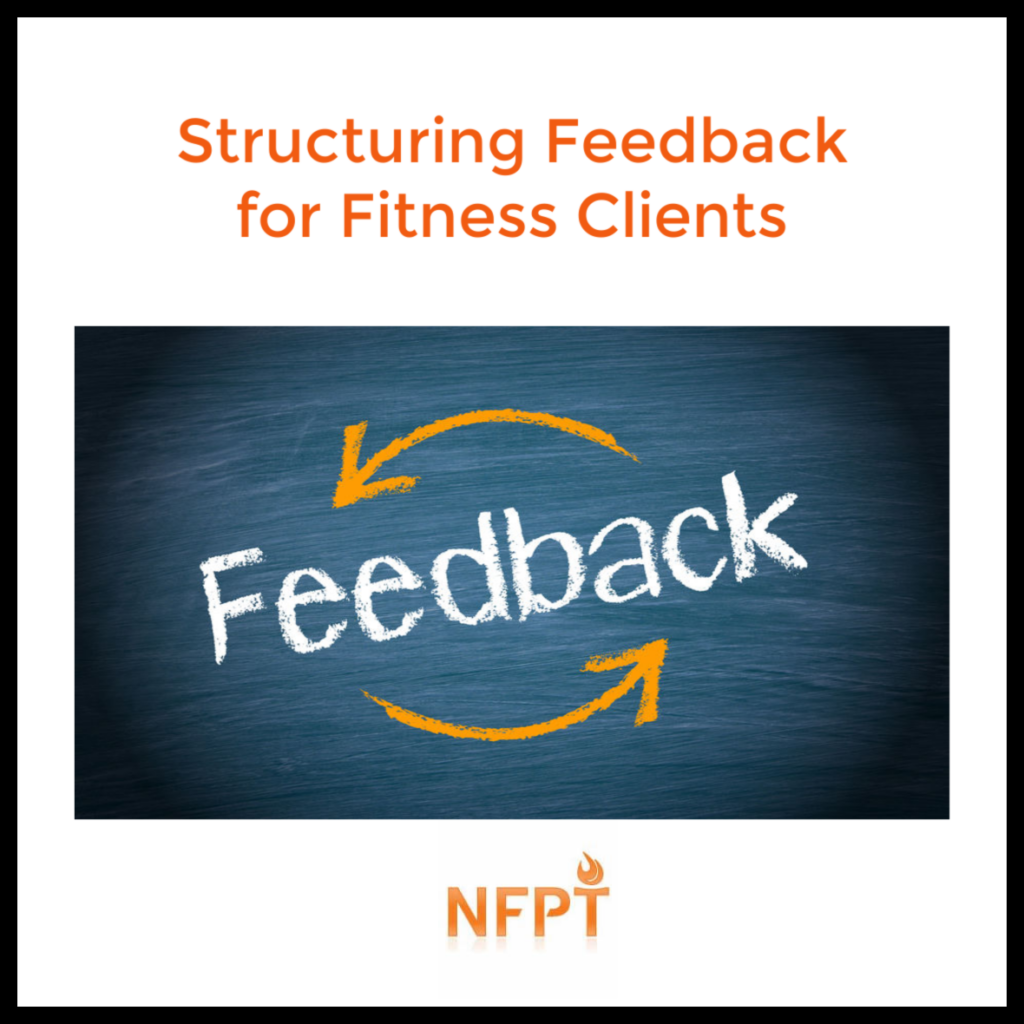Providing fitness clients balanced, constructive, and positive feedback about performance and progress is crucial to success. They rely on it in order to learn and grow. Without feedback, learning doesn’t happen. Not only is its inclusion important, how it is structured is equally as critical. Here’s how you can structure feedback to help your clients move beyond perceived barriers and achieve their fitness goals in the most efficient way.
Types of Feedback
Feedback comes in two forms: extrinsic and intrinsic. You, as the professional, have a role in providing the extrinsic variety, which includes encouraging statements, teaching and correcting exercise form, and verbal reinforcement of positive, healthy behaviors. In contrast, the intrinsic type is internal to the client and is related to what a client feels, sees, and hears. Both types of feedback are necessary for program success, motivation, and long-term commitment to a healthy lifestyle.
The Value of Feedback
Feedback provides clients with a barometer by which to measure their overall progress. If a client isn’t aware of how s/he is progressing and growing, it’s unlikely that the client will remain committed to an exercise program. It’s the same when we are learning a new skill or concept. Feedback helps motivate clients and motivation is important for long-term program adherence.
Personal trainers have a responsibility to help a client use the feedback provided (or that which the client experiences internally) to move forward in his/her goal achievement process. For example, during an exercise session, personal trainers can and should tell clients “great job” and “your form has improved with this exercise” and “I can see you’re getting stronger.” Those types of statements are all forms of feedback and reinforcement.
Lastly, feedback, when offered thoughtfully and consistently, can help create enjoyable exercise experiences for clients. When a client derives personal satisfaction from an exercise program, his/her level of commitment to that program has a tendency to increase.
Structuring Feedback
Effective, quality feedback accomplishes three specific goals:
- It notes what was done well or correctly
- It makes gentle corrections to any errors made.
- It will provide a motivational aspect to encourage the client to keep moving forward and practicing their skills and behaviors.
You can structure your phrasing to look and sound like this. “I noticed your balance was exceptional during this movement. Remember to engage the core as you step forward. You will find the exercise easier if the core is engaged and the low-back is not compromised.”
Keep feedback as encouraging as possible when correcting error movements. As clients are learning new skills and new exercises, it’s not uncommon for some stumbling blocks to present themselves. Your role is to highlight the accomplishments, correct gently, and reinforce positively.
Examples of structuring feedback positively include the following:
- Instead of “don’t hold your breath”, say “remember to breathe throughout the exercise”.
- Instead of “don’t lean forward”, say “remember to keep your chest up”.
- Instead of “don’t look down”, say “remember to keep your eyes on a fixed point on the wall directly in front of you”.
- Instead of “don’t drop your hips”, say “remember to keep your hips level”.
Note how much information a client can gain by physically adjusting a his/her body or applying gentle touch to demonstrate what an exercise should feel like. Approach this technique with caution and be sure your client is comfortable with you touching them. You can ask your client, “I’d like to show you where you should feel the tension. May I touch your shoulders?”. As you work with clients, you will gain a sense of their individual comfort level with this type of feedback and corrective style. Remember to be sensitive to all clients’ needs and preferences, offering feedback in a way that will resonate.
If you’re unsure of how your feedback is being interpreted, ask your clients reflective questions and seek their feedback. Although training a client is a teaching experience, there is a reciprocal learning process that occurs if you take the time to engage with your clients and ask for their input. Embrace that process! It will make you a better trainer and your clients will experience higher levels of success.
Reference
ACE Personal Trainer Manual (2014), 5th Edition, San Diego, CA



